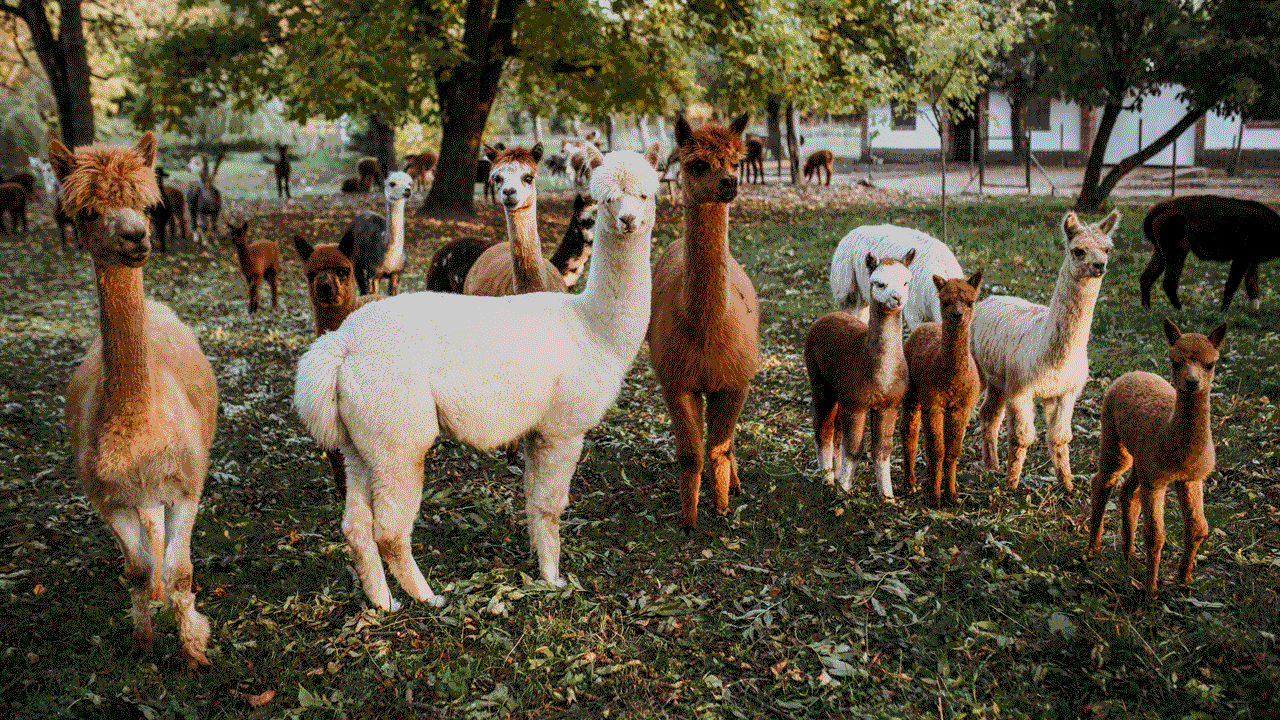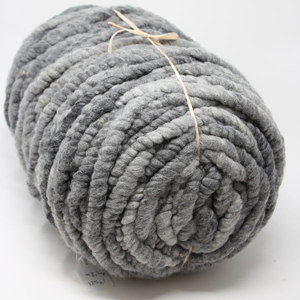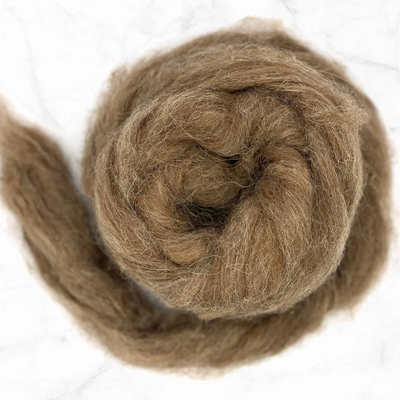Qualities
Alpaca fiber is classified into four categories, according to its fineness or diameter: Baby Alpaca, which is subdivided into three subcategories (Baby Alpaca Premium no more than 18 microns, Royal Alpaca of no more than 19 microns and Baby Alpaca of between 19 and 22 microns), Superfine Alpaca (between 22 and 25 microns), Huarizo (around 31 microns) and Adult Alpaca (more than 34 microns). Premium baby alpaca and royal baby alpaca are the finest and most exclusive fibers, and are used to make very high quality garments. Superfine Alpaca, also known as FS, is used to make more economical garments for everyday use, while Huarizo and Adult Alpaca are used more in industrial or mass production.
Baby Alpaca
(BL)
BL Premium (18µ microns)
BL Royal (19µ microns)
BL Standard (20µ microns)
Super Fine Fiber
(FS)
FS Superior (25
µ microns)
FS Mixture (26+µ microns)
Huarizo
(HZ)
HZ (30µ microns)
HZ2 (31+µ microns)
Adult Alpaca
(AG)
AG (34µ microns)
AG2 (38µ microns)
If you are looking for the best option, consult with the experts
BENEFITS OF ALPACA
In this section, we will demonstrate with key points why Alpaca fiber can be considered the best in the world, in terms of fineness, resistance, quality, thermal sensation.
Baby Alpaca
Within this category of Alpaca fiber, there are Premium of 18 microns and Royal of 19 microns and the standard that is no more than 21 microns.
Super Fine
This category includes fibers from 21.5 to 25.5 microns and is still a very high quality, which is why it is used for clothing.
Huarizo y Adulta
Huarizo and Adult Alpaca are fibers of more than 27 microns, these are used in accessories and others.
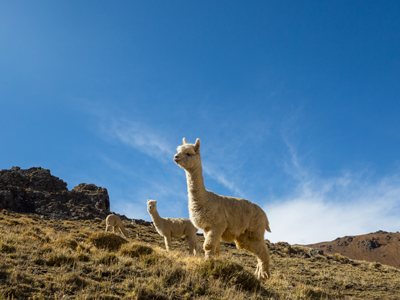
"The breeding and shearing of Alpacas is a source of income for thousands of rural families who dedicate themselves to it, in addition to being a sustainable activity that respects the environment and animal welfare."
Good grazing
The Alpaca is so eco-friendly that it does not damage the vegetation, since it feeds only on the top part of the grasses, allowing it to grow again in a short time.
Soil health
By feeding with such care, the soil does not erode, allowing the root to live and recover its sprout quickly.
Dosile
The pads of their feet are so soft that they do not damage grass or floors when walking.
Eco-friendly
Having a natural habitat of 3800 meters above sea level, Alpacas do not use water or land intended for agriculture.
Efficiency
Alpacas only consume 1 kg of food per day and give us more than 2.5 kg of fiber annually, more than 80% of which is clean fiber.
Family
It is estimated that more than 3.7 million Alpacas live in Peru and are social, docile and domestic animals.
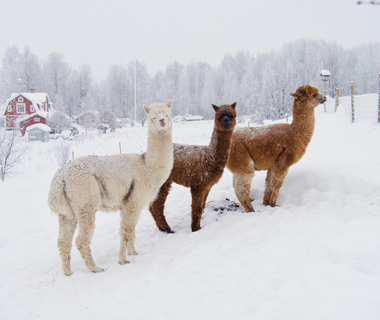
Warm
Alpaca fiber has a great thermal insulation capacity. This means it maintains body heat in winter
Thermal
Its qualities make the fiber so special that it also repels heat in summer. Basically you have optimal thermal comfort at any time of the year.
Light
Alpaca fiber has a fineness of between 18 and 35 microns, this makes it possible to produce incredibly light and thin clothing items, without sacrificing their thermal quality.
"Alpaca fiber has many advantages and its qualities make it perfect for making high-quality clothing and accessories. "
Smoothness
Alpaca fibers are light, very fine, with a soft and silky texture to the touch.
Warm
Great capacity for thermal insulation and comfort in any season of the year.
Hypoallergenic
Alpaca has very little Lanolin and the fineness of the fibers prevents them from itching or scratching when in contact with the skin.
Durable
Alpaca fibers are very resistant and do not deform or shrink with use or washing.
Ecological
The production of Alpaca wool respects the environment and the animal welfare of its breeders and the fields where they live.
Elegant
Alpaca wool adapts to different types of garments, coats, scarves, accessories, hats, gloves or blankets.
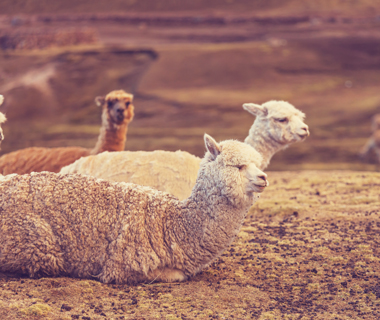
RAS
We verify the well-being of the alpaca animals and the land management requirements and we follow them from the farm to the final product.
GOTS
We align ourselves with global criteria that ensure the organic condition of our textile products; from obtaining the raw material to the correct labeling of the product.
BASC
We confirm control in all production processes, packaging, shipping and transportation of cargo destined abroad.
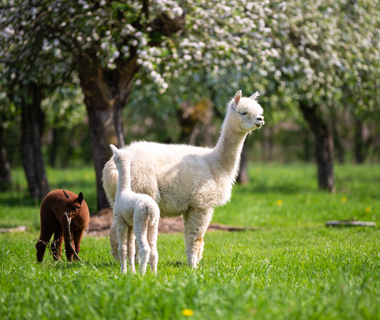
Domestics
Alpacas are estimated to have been domesticated more than 5,000 years ago by the ancient inhabitants of Peru.
Relevance
Alpacas had an important relevance for the development of ancient Peruvian cultures. It is estimated that its fiber was used 4,500 years ago.
Resilient
It is estimated that out of 10 million, only about 10% of Alpacas survived the Spanish conquest. They were affected by the conquest and by the introduction of new livestock.
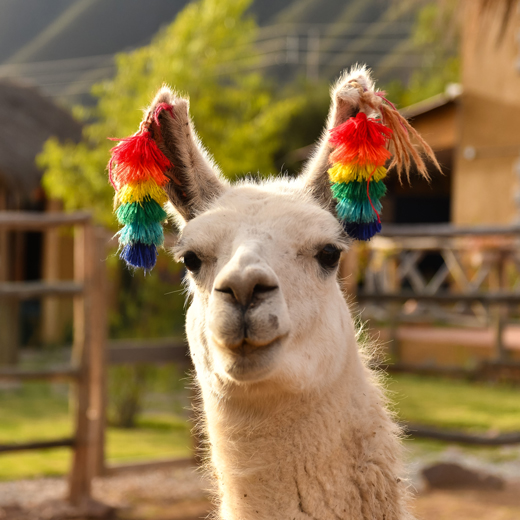
History of the Alpaca
Known as one of the most beautiful camelids in South America, alpacas are native to the Peruvian Andes. Since pre-Inca times, this wonderful species has been part of our culture, and is an integral part of daily life in the Andean region. Alpacas live in different departments of Peru, such as Puno, Cusco, Arequipa and Huancavelica.
Alpacas were the most important animal for the Inca civilization. Its meat was consumed fresh in traditional preparations such as charqui and chalona; With their wool they made threads and fabrics; Their bones, leather, fat and excrement had diverse applications such as musical instruments, footwear, medicine and fertilizer respectively. Due to their consideration, they were preferred animals for religious sacrifices; The Incas thought that sacrificing an alpaca served to appease their gods.
Textiles were very significant to the Inca Empire because they had religious and social value. A piece of cloth or clothing was considered the most precious gift, it was a sign of social status and was exclusive to members of the royal family and the highest officials of the Inca Empire. Because of this, they allowed only designated artisans to weave the alpaca fiber.
Contact us>

